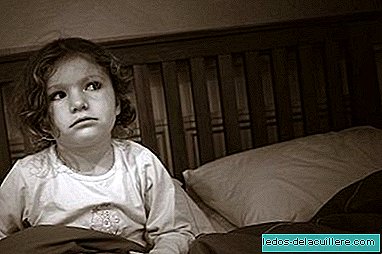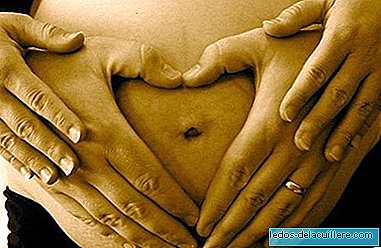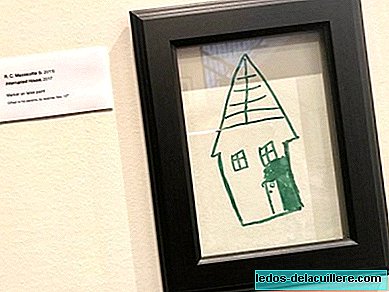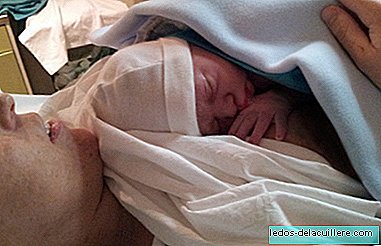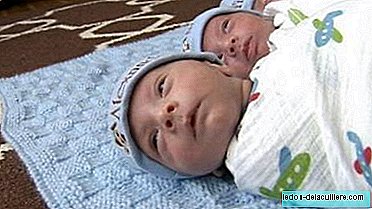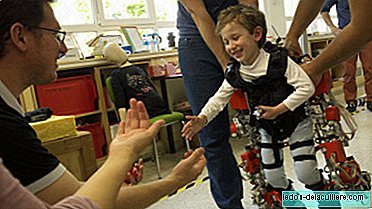
Álvaro is five years old and suffers spinal muscular atrophy, a degenerative and incurable genetic disease that affects one in 10,000 babies. He had never walked until he started a year ago to try the world's first exoskeleton developed by the Higher Council for Scientific Research (CSIC), a "robot" that has allowed Álvaro to walk for the first time and that it can also help walk the 400,000 children in the world who suffer from this disease.
There were only exoskeletons for adults, but not for children, so the CSIC team of researchers began in 2009 a project to create a child prototype that today, seven years later, is a reality. The device helps the child to walk and also tries to avoid the appearance of complications associated with the loss of mobility.
An intelligent machine
The exoskeleton, aimed at children between three and 14 years old, It is made of aluminum and titanium and weighs 12 kilos. The structure consists of long supports, called orthotics, that fit and adapt to the child's legs and trunk. In the joints, a series of engines mimic the functioning of the human muscle and give the child the strength he needs to stand and walk. The system is completed by a series of sensors, a motion controller and a battery with five hours of autonomy.
Thanks to an intelligent system adapts to the evolution of the child and allows you to change its structural rigidity so that it can adapt to different surfaces ("move from the street to the sand") and thus be able to use it perfectly to your day to day.
As explained by CSIC researcher Elena García, from the Center for Automation and Robotics, mixed center of CSIC and the Polytechnic University of Madrid.
“The main difficulty in developing this type of pediatric exoskeletons is that the symptoms of neuromuscular diseases, such as spinal muscular atrophy, vary over time both in the joints and in the body as a whole. That is why an exoskeleton capable of adapting to these variations autonomously is necessary. Our model includes intelligent joints that modify stiffness automatically and adapt to the symptoms of each child at all times. ”
An incurable disease
Spinal muscular atrophy is one of the most serious degenerative neuromuscular diseases of childhood and, although it is rare, it causes high mortality figures. It has a genetic origin and causes progressive generalized muscle weakness. Loss of strength prevents children from walking and for this reason they develop many complications such as scoliosis, osteoporosis and respiratory failure, which decrease their quality of life, as well as their life expectancy.
“Type 1, the most severe, is diagnosed a few months after birth and children hardly survive 18 months. Type 2, which is addressed by this exoskeleton, is diagnosed between seven and 18 months of age and children who suffer from it never walk, which causes a significant deterioration of their condition. Their life expectancy is conditioned by the lack of mobility, and any respiratory infection is critical after two years, although there are cases in which they reach adulthood. Type 3 is diagnosed after 18 months although its symptoms become noticeable in adolescence, when patients lose the ability to walk. In the latter case, life expectancy is similar to the average, although with lower quality ”.
Children are losing all mobility of their legs because their muscles weaken, with this "robot" "we can mimic the natural behavior of the muscle, replace it"
When and how much will it be marketed?
The technology has already been patented and jointly licensed by CSIC and its technology-based company Marsi Bionics, and is currently in a preclinical phase. The clinical phase will begin soon.
So far, only two prototypes have been manufactured that are being used by 12 children, from three to nine years old, at the Sant Joan de Déu Children's Hospital in Barcelona and the Ramón y Cajal University Hospital in Madrid.
"The most difficult and expensive thing is to get the certificates to be able to market them (the European CE and the US FDA). It will take about a year and a half to get them"adds Garcia.
Once achieved, if they will be manufactured in series, they would cost 30,000 euros only for manufacturing. "Our idea is that families rent the device, for about 800 euros per month, but also can be sold for about 50,000 euros"The team that coordinates García receives calls from all over the world every day." From the United States, from Mexico ... everyone wants one. "
So that more children can walk and rehabilitate thanks to pediatric exoskeletons, a crowdfunding campaign has been launched that also allows the donor to become a project partner and benefit financially from its results.



